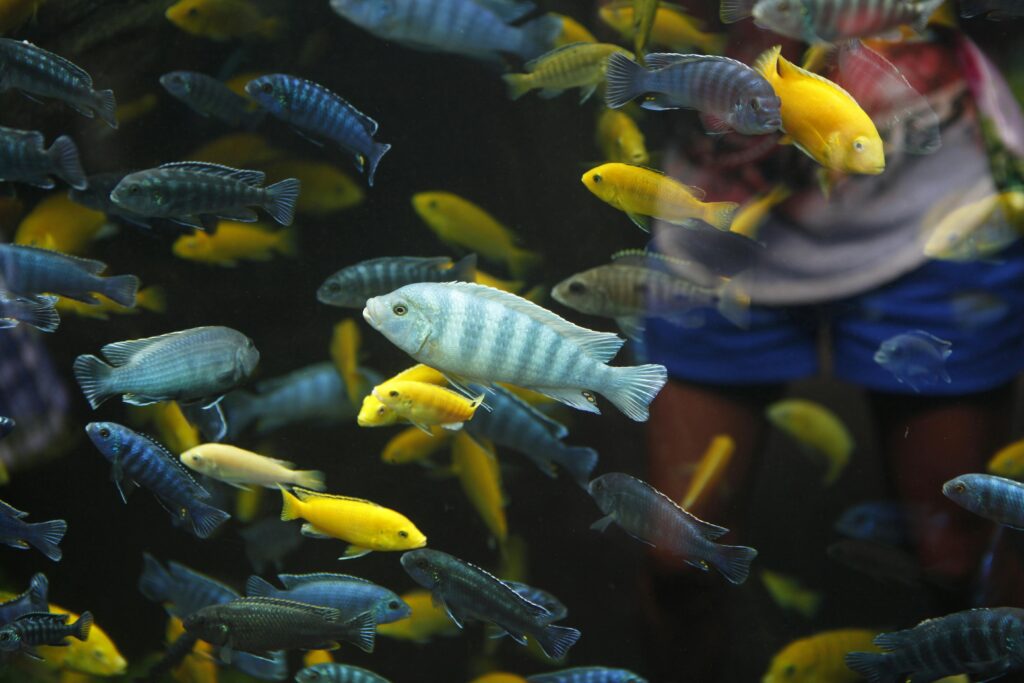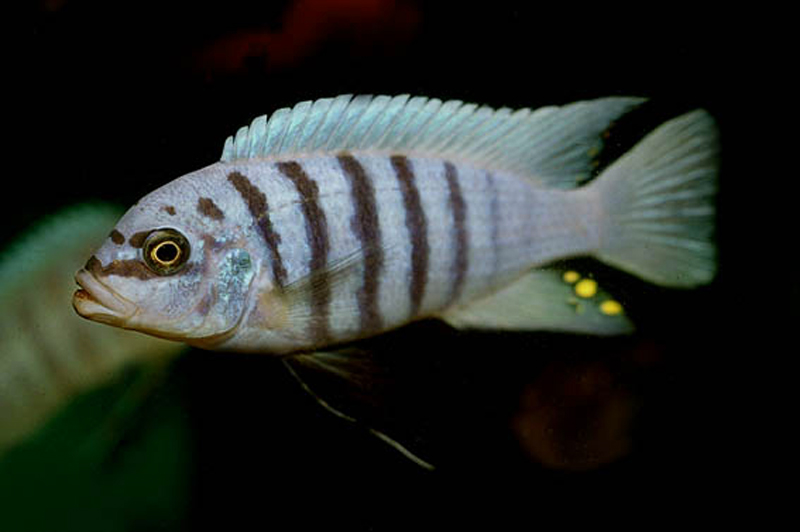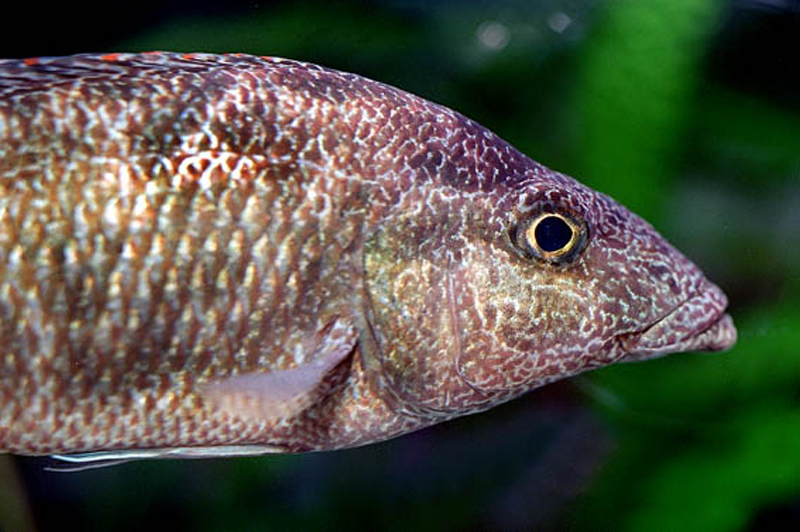text by by Rafal Izdebski
Congratulations! Your fish are thriving in their environment and have started breeding. This guide explains the different methods you can use to harvest the fry and raise them into healthy, thriving adults.
The Breeding Process of Malawi Cichlids
Malawi cichlids are maternal mouthbrooders, meaning the female lays the eggs, has them fertilized by the male, and then takes them into her mouth. She holds them for several weeks until the eggs hatch and the fry are ready to be released.

A vibrant display of Malawi cichlids showcasing their diverse colors and patterns in a naturalistic aquarium setting.
Here’s a quick timeline:
- Eggs Hatch: About one week after fertilization.
- Fry Development: By two weeks, fry have absorbed their egg sacs and are ready for external feeding.
- Release: Most females release fry between 2-4 weeks, depending on factors like age, health, hunger, and tank conditions.
You can tell a female is holding by her enlarged buccal cavity (throat area) and her mostly closed mouth. During this time, she eats very little, if at all.
Methods for Raising Fry
There are several ways to manage fry once they’ve hatched. Choose the method that works best for your tank setup and goals.
1. Letting the Female Release Naturally in the Main Tank
This is the most natural method. The female stays in the main tank and releases the fry when she’s ready. For better fry survival:
- Reduce the number of adult fish in the tank.
- Provide plenty of shelter, such as aquarium caves or rock decorations (Check these popular options on Amazon).
Considerations:
While this method is natural, fry survival rates can be low if there are many predators or insufficient hiding spots. The female may also experience more stress from fending off tank mates.
2. Transferring the Female to a Separate Tank
In this method, the female is moved to an unoccupied tank where she can release the fry safely. Once she releases the fry, she may take them back into her mouth for protection until she feels they can fend for themselves.
After she’s done caring for the fry, return her to the main tank or a recovery tank to regain her strength.
Advantages:
- Higher fry survival rates.
- Reduced stress on the female.
Recommendation: A small breeder tank or isolation box can help ensure fry safety and simplify management. (Find affordable options here).
3. Stripping Fry from the Female
Stripping involves manually removing fry from the female’s mouth. Here’s how it’s done:
- Transfer the female to a bucket with tank water.
- Gently hold her under the water, ensuring her gills remain uncovered.
- Use a fingernail or fine tool to gently open her mouth and let the fry escape.

Metriaclima zebra ‘Maisoni Reef,’ a striking Malawi cichlid known for its vivid blue and black vertical stripes, in a naturalistic tank environment. Photo: Fredrik Hagblom
Use a fingernail or fine tool to gently open her mouth and let the fry escape.
Check that all fry are out by briefly lifting her from the water and inspecting her mouth with a light. Once stripped, you can raise the fry in a separate tank or a breeder box.
When to Strip:
Wait at least two weeks after the female starts holding to ensure the eggs have hatched and the fry are ready.
Why Choose This Method?
Stripping is useful when females are immature, prone to spitting fry prematurely, or unable to hold to term. It also ensures fry survival.
Tip: A high-quality aquarium net or fish scoop can make handling the female easier and less stressful (View top-rated nets here).
4. Stripping and Artificially Incubating Eggs
This advanced method involves removing eggs from the female shortly after fertilization and incubating them in an egg tumbler. The tumbler aerates the eggs, helping them develop properly.
Eggs typically hatch within a week and become free-swimming fry by the third week.
Advantages:
- Ensures maximum fry survival.
- Ideal for females prone to swallowing eggs or spitting prematurely.
Gear Tip: An egg tumbler is essential for this method. (Learn more about tumblers here).

Nimbochromis linni, a predatory Malawi cichlid with a unique camouflage pattern, gracefully swimming in a rocky freshwater aquarium. Photo: Fredrik Hagblom
Caring for the Fry
Once fry are separated from the female:
- Feed Regularly: Offer finely crushed flake food or live/frozen brine shrimp once their egg sacs are absorbed. (Try this highly-rated fry starter food).
- Maintain Water Quality: Ensure the tank is clean and well-filtered.
- Provide Space: A large tank allows fry to grow without stress.
- Monitor Lighting: Proper lighting supports their development.
Final Tips
Most Malawi cichlids can breed monthly, so be prepared for a steady supply of fry. Whether you’re raising a few or many, providing the right environment and care will ensure your fry grow into healthy, vibrant adults.
Read Also:
- “How to Set Up Your Very First Freshwater Aquarium: A Step-by-Step Guide” Discover the essential steps to set up your first freshwater aquarium and create a thriving aquatic environment.
- “Best Aquarium Filters 2024” Explore our expert recommendations for the best filters to keep your aquarium clean and your fish healthy.
